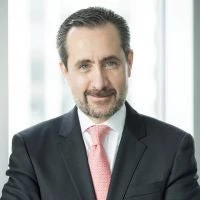 A little girl playing with water coming out of a pipe
A little girl playing with water coming out of a pipe
COVID-19, the war in Ukraine, continued conflict in and around many countries around the world, and other factors have left countries with high debt. On top of these challenges, climate concerns continue to mount. In the nearer term, the World Bank estimates that addressing climate change, conflict, and pandemics in developing countries will cost $2.4 trillion in public and private spending per year through 2030. Furthermore, scaled-up finance from all sources is needed to meet the estimated $20 trillion in financing required over the coming decade to address development and climate challenges in developing countries.
Considering the financing scale and new challenges, we must foster and amplify private capital flows to countries. This is one of the main reasons the World Bank Group, led by its Board and shareholders, has embarked on a process to evolve its Vision and Mission, Operating Model, and Financial Capacity under the Evolution Roadmap. Publicly disclosed in January 2023, the Roadmap is now under public consultation (until July 31, 2023).
Some of the financial proposals under the Evolution Roadmap which have already been approved - including lowering the minimum Equity to Loan ratio for the International Bank for Reconstruction and Development’s (IBRD), increasing the limit for shareholder guarantees, and a pilot program for hybrid capital – are expected to add up $50 billion in additional capacity for World Bank initiatives over the next decade.
Since 1947, World Bank Treasury has raised funds from capital markets in more than 75 countries, enabling the World Bank to fulfill its development mission. Since the Bank’s inception – which began with about $20 billion in paid-in capital – we have mobilized about $1 trillion dollars to finance World Bank projects in developing countries, making us one of the most effective engines for mobilizing private capital for sustainable development ever created.
Beyond raising funds, Treasury has about $200 billion in assets under management for World Bank institutions and over 70 clients (including trust funds). In addition to traditional lending, we also provide advisory services, technical assistance, and risk mitigation to our client governments.
We also work with client countries and private sector finance partners to develop innovative financing structures.
At the center stage of the 2023 IMF/World Bank Spring Meetings this year, The Power of Private Capital in Sustainable Development public event, brought together some of our key partners to shed light on some of these instruments and achievements made in the process.
In this event, World Bank President David Malpass and Managing Director and CFO Anshula Kant joined me in hosting a fireside chat and a panel, where speakers discussed ways to channel private capital toward development needs, as well as multiple innovative structures through which the Bank has assisted in this effort.
The panelists, including Ministers from Egypt and the Philippines, discussed how Green Bonds, Catastrophe ("Cat") Bonds, Emissions-linked financing, "Rhino" Bonds, and other performance-based instruments supported by the World Bank have helped their countries scale up financing for critical development needs and catastrophe mitigation.
As impressive and innovative as these initiatives have been, one takeaway from the event that particularly resonated with me—and one which the panelists mentioned on several occasions—is that substantial scale-up in the use of these existing instruments is needed, and even more innovation is necessary. Towards this aim, international cooperation, strong public and private partnerships, and communication among stakeholders (particularly international banking institutions, governments in emerging economies, and financial intermediaries such as the World Bank) are essential to achieving the longer-term Sustainable Development Goals.
While working with our client countries to address these immediate issues, we must also continue tackling the traditional challenges. Only by doing both we can recover from the setbacks to poverty and inequality reduction the world has suffered in recent years.
During the event, I was buoyed by the unwavering enthusiasm of the panelists to continue working with the World Bank to mitigate the additional risks inherent in investing in developing countries. An increasing sense of urgency exists among all stakeholders, including the World Bank, to mobilize more financing for sustainable development.
The World Bank will continue collaborating with stakeholders to innovate and become more flexible and strategic with its capital. Along the way, we must disrupt the old way of doing things and adjust our business model to create the enabling environment for channeling private capital to meet both old and new development challenges.


Join the Conversation